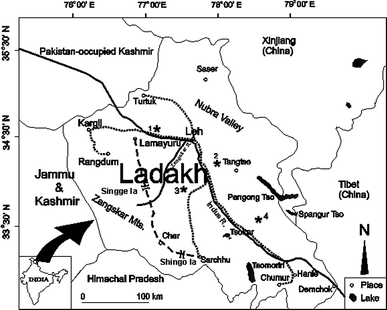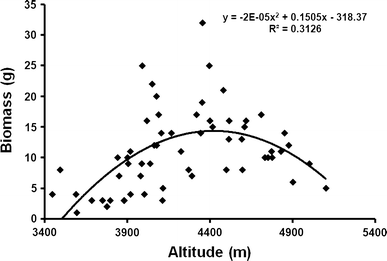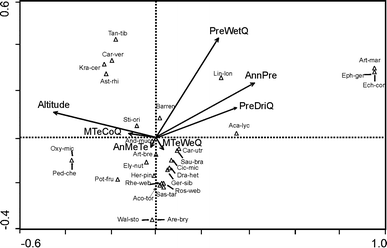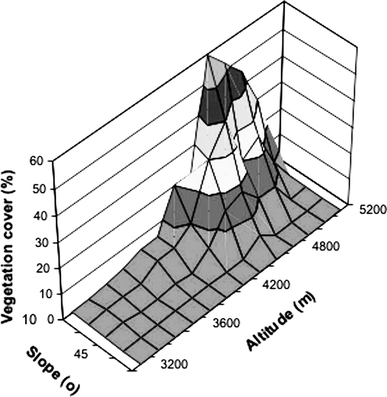Biomass and diversity of dry alpine plant communities along altitudinal gradients in the Himalayas
- PMID: 21638006
- PMCID: PMC3236822
- DOI: 10.1007/s10265-011-0430-1
Biomass and diversity of dry alpine plant communities along altitudinal gradients in the Himalayas
Abstract
A non-linear relationship between phytodiversity and altitude has widely been reported, but the relationship between phytomass and altitude remains little understood. We examined the phytomass and diversity of vascular plants along altitudinal gradients on the dry alpine rangelands of Ladakh, western Himalaya. We used generalized linear and generalized additive models to assess the relationship between these vegetation parameters and altitude. We found a hump-shaped relationship between aboveground phytomass and altitude. We suspect that this is engendered by low rainfall and trampling/excessive grazing at lower slopes by domestic livestock, and low temperature and low nutrient levels at higher slopes. We also found a unimodal relationship between plant species-richness and altitude at a single mountain as well as at the scale of entire Ladakh. The species-richness at the single mountain peaked between 5,000 and 5,200 m, while it peaked between 3,500 and 4,000 m at entire Ladakh level. Perhaps biotic factors such as grazing and precipitation are, respectively, important in generating this pattern at the single mountain and entire Ladakh.
Figures






References
-
- Aiba S-i, Kitayama K. Structure, composition and species diversity in an altitude-substrate matrix of rain forest tree communities on Mount Kinabalu, Borneo. Plant Ecol. 1999;140:139–157. doi: 10.1023/A:1009710618040. - DOI
-
- Aswal BS, Mehrotra BN (1994) Flora of Lahaul-Spiti Bishen Singh Mahendra Pal Singh, Dehradun, India
-
- Bhattarai KR, Vetaas OR, Grytnes JA. Fern species richness along a central Himalayan elevational gradient. Nepal J Biogeog. 2004;31:389–400. doi: 10.1046/j.0305-0270.2003.01013.x. - DOI
-
- Bruun HH, Moen J, Virtanen R, Grytnes J-A, Oksanen L, Angerbjörn A, Ezcurra E. Effects of altitude and topography on species richness of vascular plants, bryophytes and lichens in alpine communities. J Veg Sci. 2009;17:37–46. doi: 10.1111/j.1654-1103.2006.tb02421.x. - DOI
-
- Champion FW, Seth SK. A revised survey of the forest types of India Manager. Nasik: Government of India Press; 1968.
Publication types
MeSH terms
LinkOut - more resources
Full Text Sources

